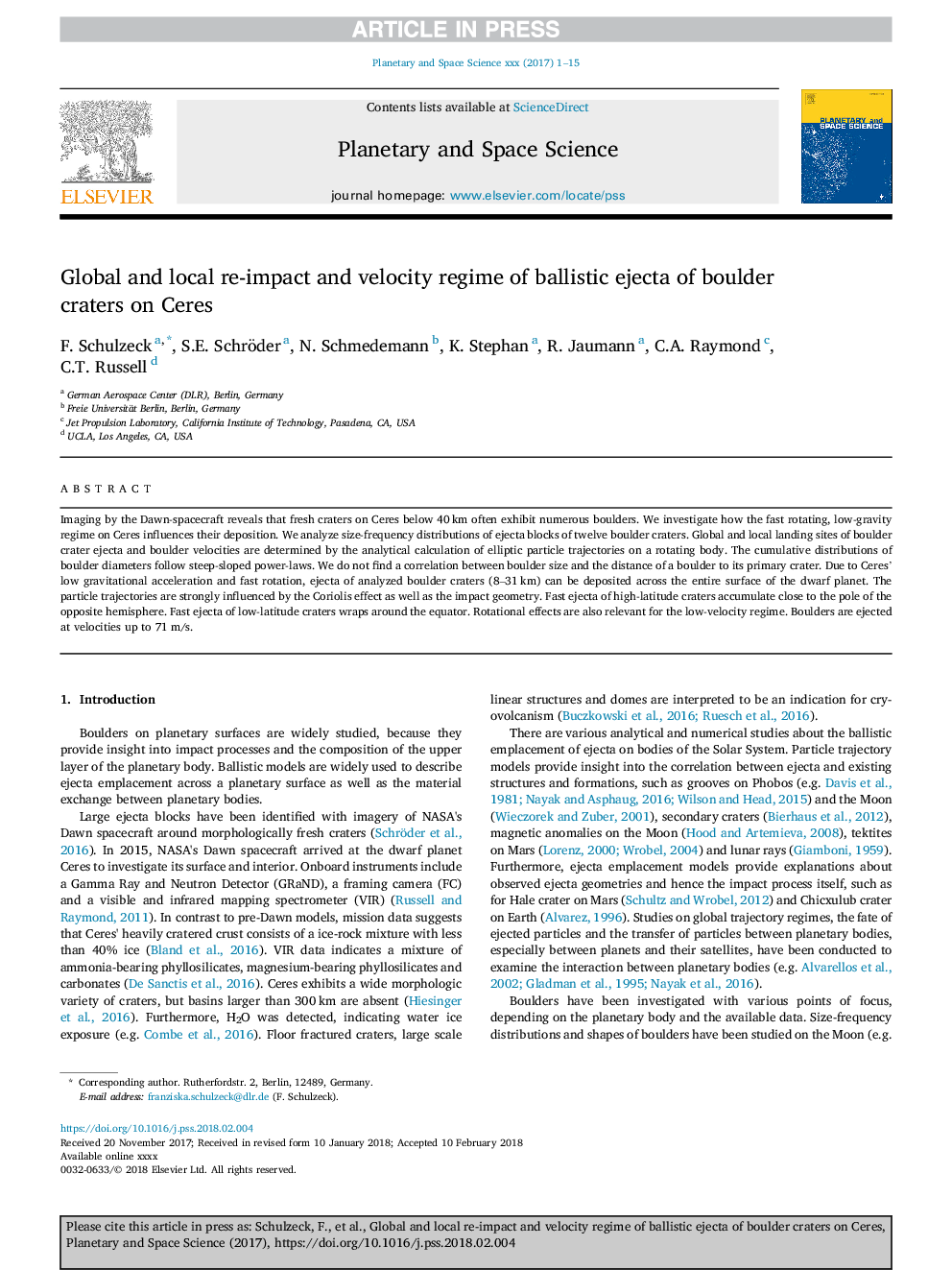| Article ID | Journal | Published Year | Pages | File Type |
|---|---|---|---|---|
| 8142330 | Planetary and Space Science | 2018 | 15 Pages |
Abstract
Imaging by the Dawn-spacecraft reveals that fresh craters on Ceres below 40â¯km often exhibit numerous boulders. We investigate how the fast rotating, low-gravity regime on Ceres influences their deposition. We analyze size-frequency distributions of ejecta blocks of twelve boulder craters. Global and local landing sites of boulder crater ejecta and boulder velocities are determined by the analytical calculation of elliptic particle trajectories on a rotating body. The cumulative distributions of boulder diameters follow steep-sloped power-laws. We do not find a correlation between boulder size and the distance of a boulder to its primary crater. Due to Ceres' low gravitational acceleration and fast rotation, ejecta of analyzed boulder craters (8-31â¯km) can be deposited across the entire surface of the dwarf planet. The particle trajectories are strongly influenced by the Coriolis effect as well as the impact geometry. Fast ejecta of high-latitude craters accumulate close to the pole of the opposite hemisphere. Fast ejecta of low-latitude craters wraps around the equator. Rotational effects are also relevant for the low-velocity regime. Boulders are ejected at velocities up to 71â¯m/s.
Related Topics
Physical Sciences and Engineering
Earth and Planetary Sciences
Geophysics
Authors
F. Schulzeck, S.E. Schröder, N. Schmedemann, K. Stephan, R. Jaumann, C.A. Raymond, C.T. Russell,
